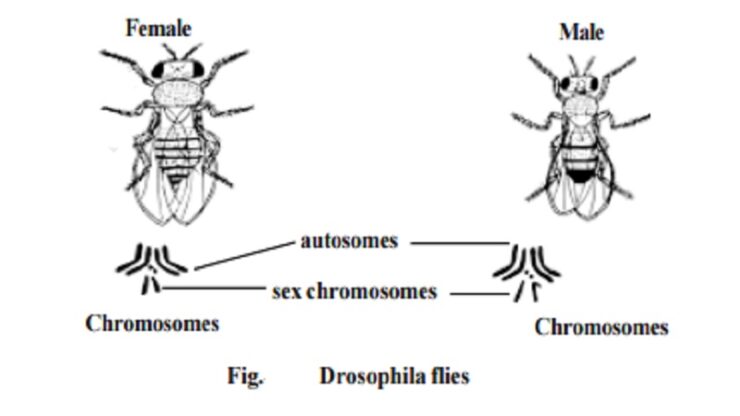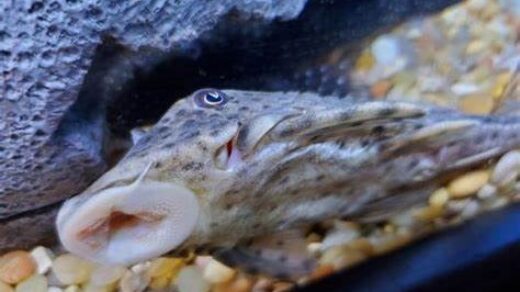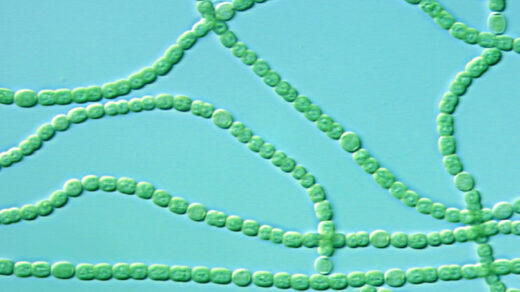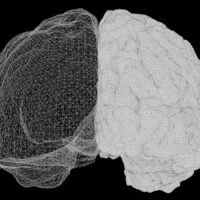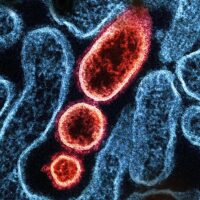Sex determination in Drosophila is controlled by the ratio of X chromosomes to sets of autosomes (denoted as the X:A ratio). This mechanism is known as the genic balance theory and was first proposed by Calvin Bridges in 1921.
Unlike mammals, where the presence of the Y chromosome plays a decisive role in determining maleness, Drosophila sex determination relies on the balance between the number of X chromosomes and autosomes. The Y chromosome, in Drosophila, is involved in fertility but not in sex determination.
The Genic Balance Theory
- Female development occurs when the X:A ratio is 1.0 (i.e., two X chromosomes and two sets of autosomes).
- Male development occurs when the X:A ratio is 0.5 (i.e., one X chromosome and two sets of autosomes).
- Intersex individuals can develop when the X:A ratio is between 1.0 and 0.5, displaying characteristics of both males and females.
- Metamales and metafemales can arise with extreme deviations in the X:A ratio. Metamales have an X:A ratio lower than 0.5, and metafemales have an X:A ratio higher than 1.0, although both are typically sterile and exhibit abnormal development.
Sex-Determining Genes in Drosophila
The sex-lethal (Sxl) gene plays a crucial role in the sex determination pathway. It is regulated by the X:A ratio:
- In females, with an X:A ratio of 1.0, the Sxl gene is activated, leading to female-specific splicing of RNA and the development of female characteristics.
- In males, with an X:A ratio of 0.5, the Sxl gene remains inactive, which results in male-specific development.
The Sxl gene essentially acts as a switch that turns on female development pathways when it is active. When inactive, the development of male characteristics is favored.
Gynandromorphs in Drosophila
A gynandromorph is an organism that contains both male and female tissue. This can happen due to a loss of an X chromosome during an early mitotic division. If an X chromosome is lost in one of the early dividing somatic cells, the result is an organism with cells that are either XX (female) or XO (male). This creates a fly that is part male and part female.
Summary of Sex Determination Mechanisms
Sex determination mechanisms vary across the animal kingdom and are generally classified as:
- Genetic (Genotypic):
- Sex-determining gene (No sex chromosome): Some species (certain amphibians and insects) determine sex via a specific gene, without sex chromosomes.
- Sex-determining chromosome: In many animals including humans, birds, and grasshoppers, sex chromosomes dictate sex:
- XX/XY system: Humans and Drosophila (XX female, XY male)
- ZZ/ZW system: Birds (ZZ male, ZW female)
- XX/X0 system: Some insects like grasshoppers (XX female, X0 male)
- Environmental:
In many reptiles, sex is influenced by environmental factors, commonly incubation temperature (e.g., turtles and alligators).
Table: X:A Ratio and Sex in Drosophila
| X:A Ratio | Sex | Description |
|---|---|---|
| 1.50 | Metafemale | Abnormal development, sterile |
| 1.00 | Female | Normal female with two X chromosomes |
| 0.67 | Intersex | Mixed male and female traits |
| 0.50 | Male | Normal male with one X chromosome |
| 0.33 | Metamale | Abnormal development, sterile |
Flowchart: Sex-determining Mechanisms in Animals
- Genetic (Genotypic)
- Sex-determining gene (No sex chromosome): Found in many amphibians and insects
- Sex-determining chromosome:
- Presence or absence of particular chromosome (e.g., grasshoppers)
- XX Female, X0 Male
- Heterogametic male (e.g., humans)
- XX Female, XY Male
- Heterogametic female (e.g., birds)
- ZZ Male, ZW Female
- Presence or absence of particular chromosome (e.g., grasshoppers)
- Environmental
- Temperature-dependent sex determination (e.g., reptiles)

